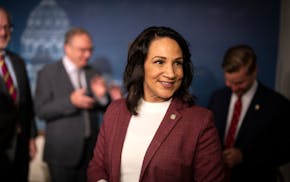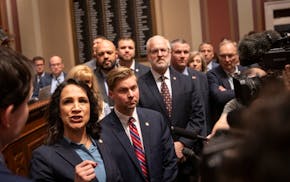It turns out that letting residents weigh in on how Burnsville should spend money could be more expensive than the city bargained for.
An experiment in letting residents direct where some tax dollars will go could cost two to three times more to administer than the $100,000 it would let residents spend, Burnsville staff revealed at a work session last week. Still, the city's "participatory budgeting" project — an innovative idea tried mostly in larger U.S. cities such as Boston and Oakland, Calif. — will continue, with staff sharing more specifics in September.
The council decided to pursue the project last September. Last week, most council members supported allocating $100,000 toward neighborhood grants of up to $10,000 each.
"I absolutely know [residents] have ideas we've never even thought of, never even considered," said Cara Schulz, the council member who first championed the idea. "We just have to give our residents the opportunity ... to have some control of their destiny."
City staff estimated administering the pilot will take 2,500 to 3,500 staff hours — the equivalent of $170,000 to $240,000 the first year — at a time when the city's staff is stretched thin and there's no budget for hiring. Other costs, including promoting it, would add $30,000 to $50,000, said Bethany Brewer, Burnsville's strategic initiatives director.
Council Member Dan Kealey emphasized that costs associated with staff hours didn't require new money but would use existing, salaried staff.
"Up to half a million dollars a year to do this thing?" said Council Member Dan Gustafson. "We have existing programs in place to get into our neighborhoods already without having to put together a new program."
Gustafson said he's now a "no" vote on the pilot; Council Member Vince Workman said though he's not opposed to it, he's also worried that costs are "creeping up."
But Schulz said in an interview she believes the program will be significantly smaller than what was presented at the work session and require a fraction of the staff time discussed.
Staff had posed five questions to the council, including how to determine neighborhood boundaries and who will provide guidance to the staff making it happen.
Most council members agreed that while some neighborhoods were obvious because they are governed by homeowners associations, residents should get to define neighborhood boundaries themselves and estimated there could be 70 or more.
Several council members leaned toward using money gained from selling city property or applying for outside money to fund the grants, rather than relying on funds from the city's Economic Development Authority (EDA). EDA money can only be for physical improvements, staff said.
Schulz suggested seeking out grants from nonprofits: "Since this is something that is more groundbreaking, the chance of grant award is actually higher," she said.
Participatory budgeting has also been tried in smaller or more informal ways in Minnesota cities including Minneapolis, Duluth and Bloomington.
New Minnesota GOP leaders seek peace with party's anti-establishment wing

Who is Republican Lisa Demuth, Minnesota's first House speaker of color?

Minnesota House GOP, Secretary of State Steve Simon return to Supreme Court
Supreme Court sides with DFL and Simon, says 68 House members needed for floor action

